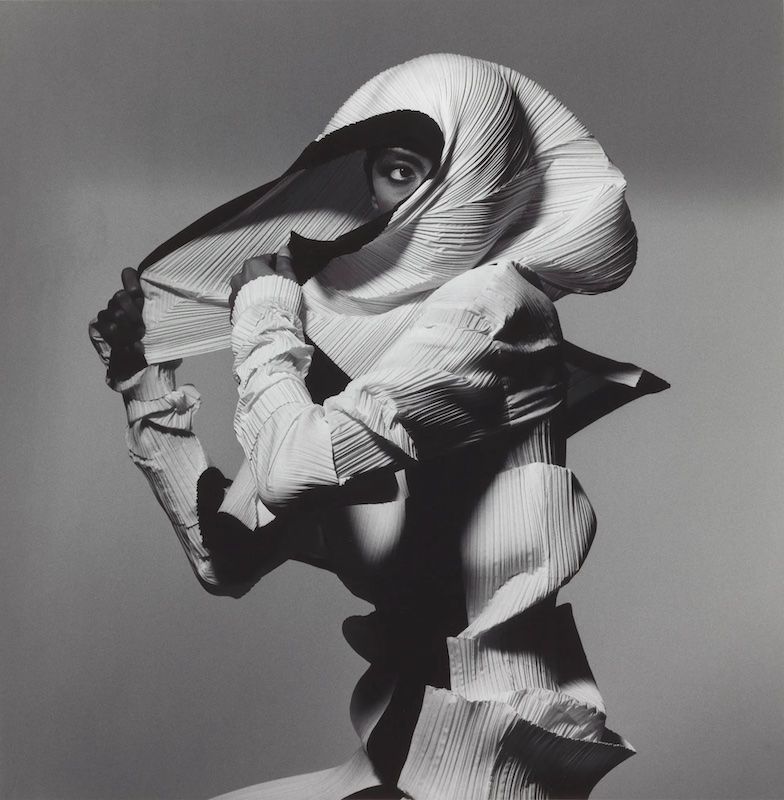Irving Penn: Passage is one of the first photo books I bought. I still remember the occasion. At the time my newspaper carried a section in its Friday books supplement with notable books on offer at bookstores across the Netherlands. One day it listed Passage, which a bookstore in The Hague had imported from the US, and which was described as a publishing gem and a must have for the price. I called the bookstore and asked them if they could reserve a copy, without actually knowing much about the book’s content. So early the next morning I got on a train to The Hague to buy a book. Even at a discount it exceeded my student budget, but I was glad I had been able to obtain a copy, because it is indeed a beautifully printed book and it turned out that I was not the only one who had called the bookstore.
To celebrate the centenary of his birth the Grand Palais has organized a large retrospective of Irving Penn’s work. The exhibition was previously shown at the Metropolitan Museum of Art in New York. Even though I’m already familiar with his work I was eager to visit the exhibition. I’m happy I did, because I discovered a number of photos that I hadn’t seen before such as the below "Tarot reader" (1949) from a photo shoot for Vogue. In case you're wondering, the fashion model in the photo of the mouth with the bee is real and the bee is alive and survived the photo shoot.
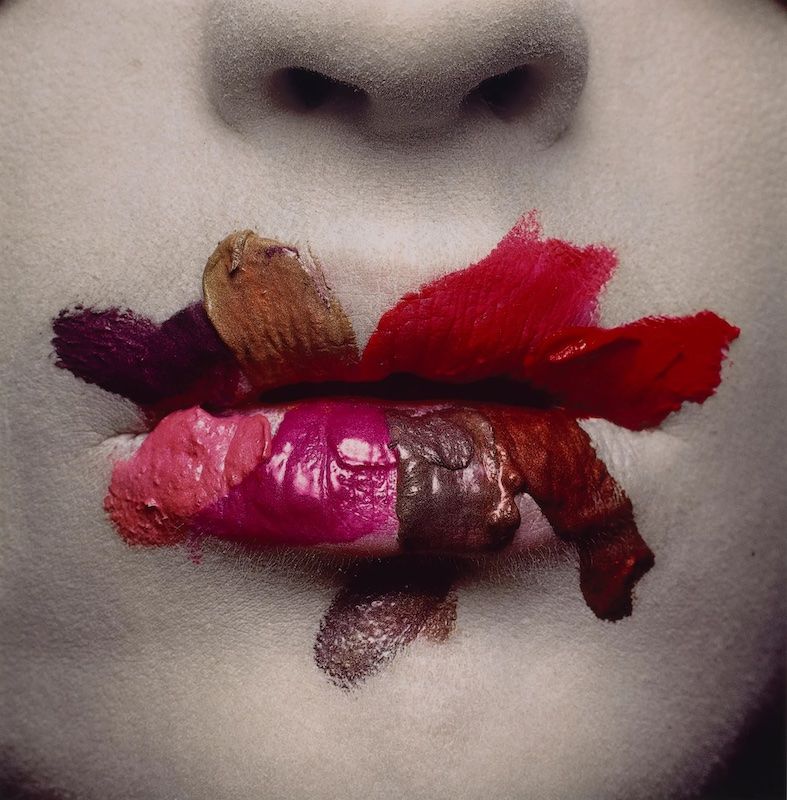
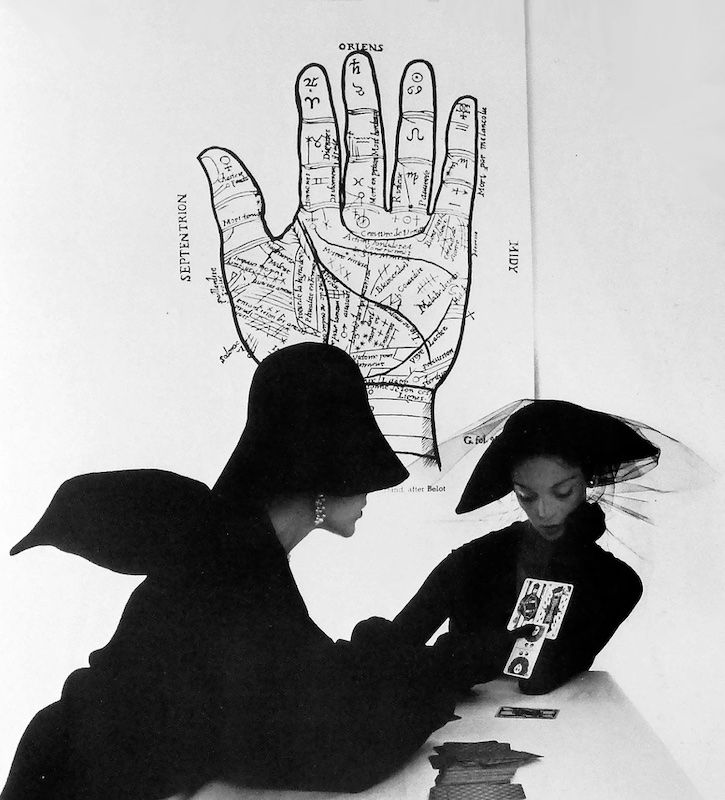
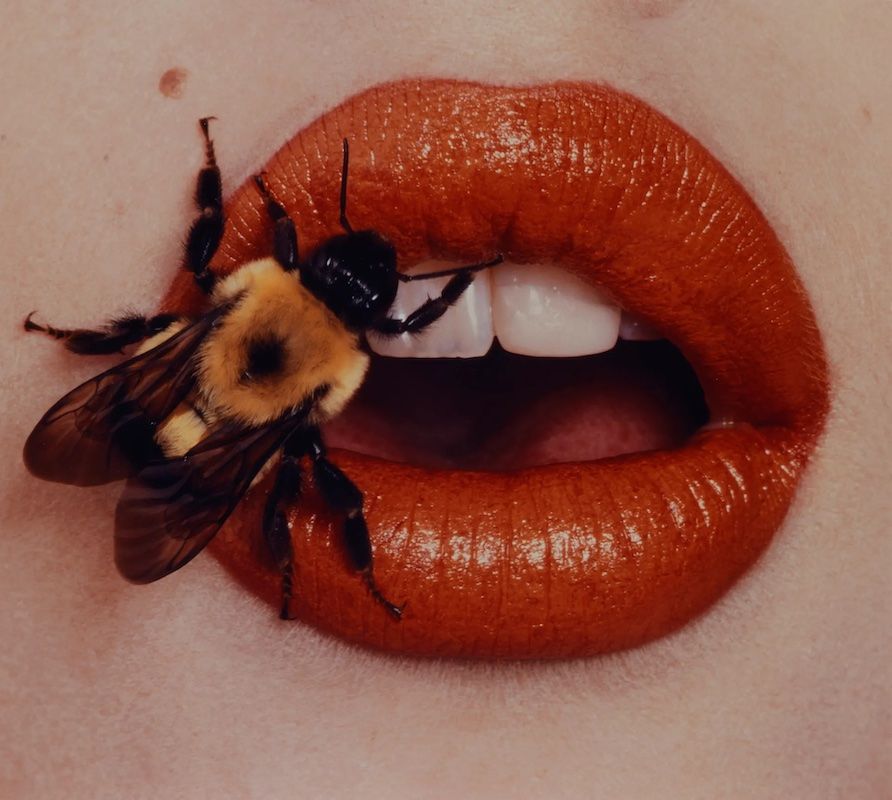
Irving Penn, Mouth (1986), Tarot Reader (1949), Bee (1995)
Irving Penn (1917-2009) is best known for his fashion work, celebrity portraits and his still lifes of food, animal skulls and cigarette buds. He originally aspired to be a painter and spent four years at the Philadelphia Museum and School of Industrial Art. He was frustrated by his attempts at drawing and painting and after buying his first camera he realized where his talents lay. In 1943 he was hired by Vogue to design covers, but before long he began taking fashion photographs for the magazine. He would continue doing so for the rest of his long productive life.
In 1948 Vogue commissioned Penn to do a photo shoot with the fashion model Jean Patchett in Peru. The assignment finished Penn travelled on to Cuzco, where he rented a studio from a local photographer in order to photograph some of the townspeople. Penn was lucky that he arrived at a time when the town was flooded by people from across the region who came to Cuzco to trade goods and participate in festivities. As Penn recalled “When subjects arrived to the studio to be photographed, they found me instead of the proprietor. Instead of them paying me, I paid them for posing. A very confusing affair.”
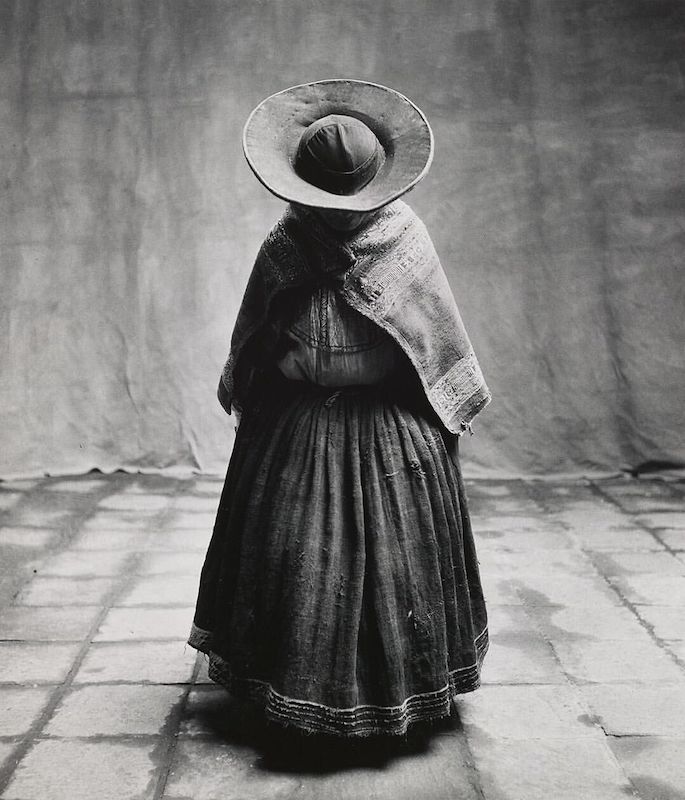
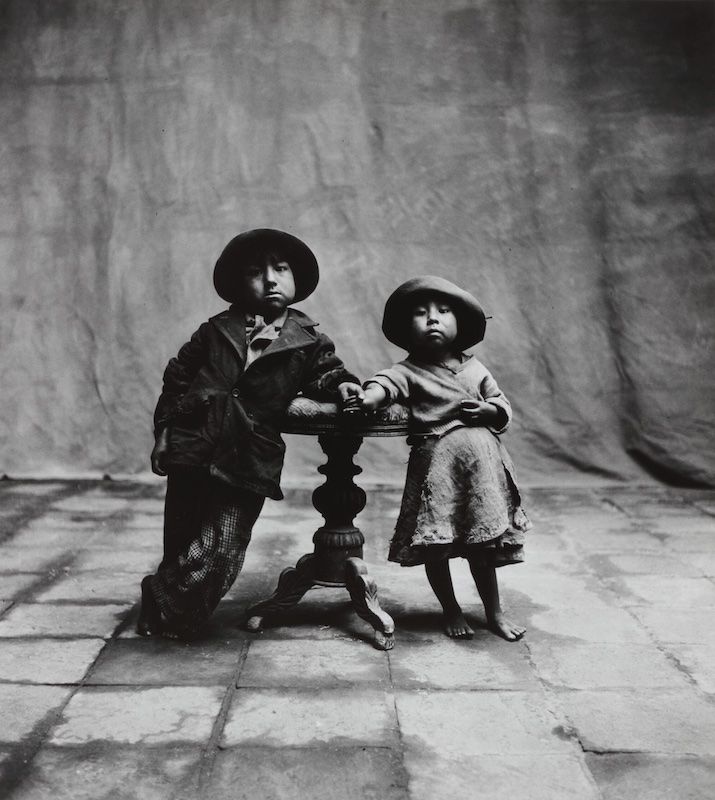
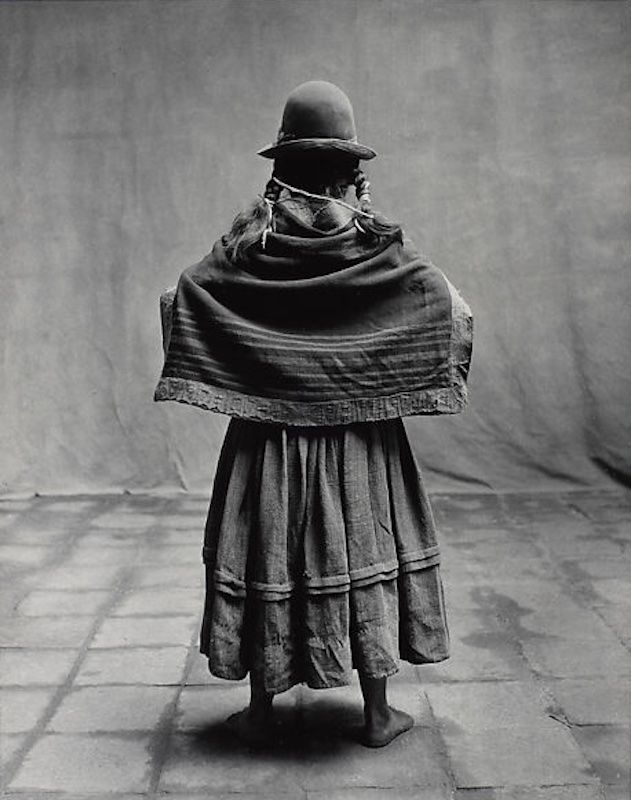
Irving Penn, Cuzco (1948)
Penn photographed the locals in exactly the same way as he photographed artists and celebrities in New York. In three days he made more than 2,000 photographs, a selection of which would be published by Vogue in the following year, 1949. It was the beginning of a lifelong interest in ethnography.
From 1967 to 1971 Penn travelled to Morocco, Papua New Guinea, Nepal and other countries carrying with him a bespoke tent studio in which he would photograph locals. So before there was Jimmy Nelson there was Irving Penn. I know that these kinds of photos are now criticized for their Western gaze. But because Penn photographed all his subjects in the same way and under the same conditions, they could also be seen as evidence for a respectful democratic gaze. Of course, Penn was not an anthropologist and should not be judged as such.
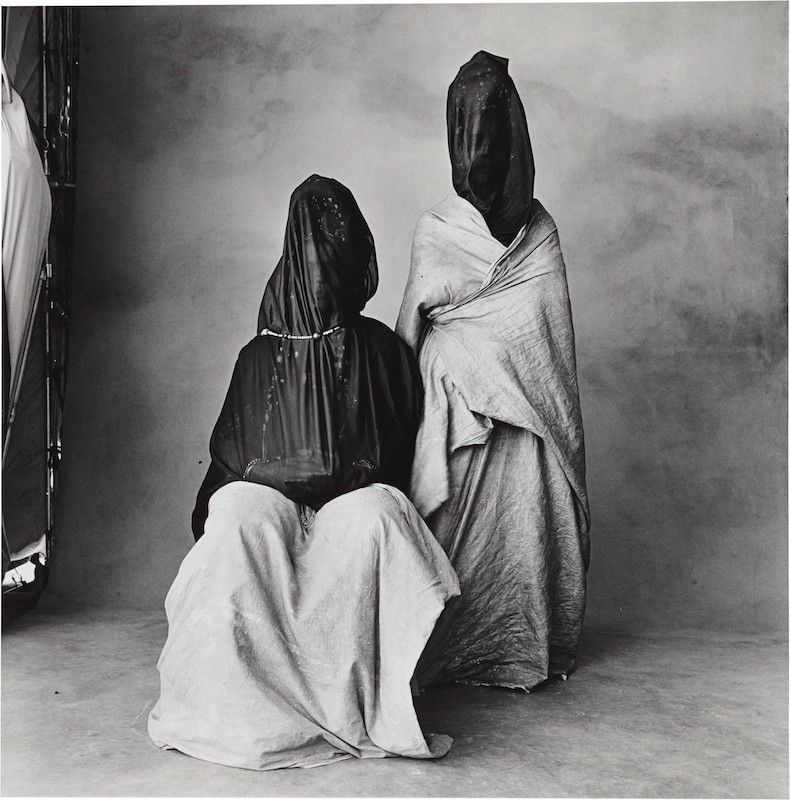
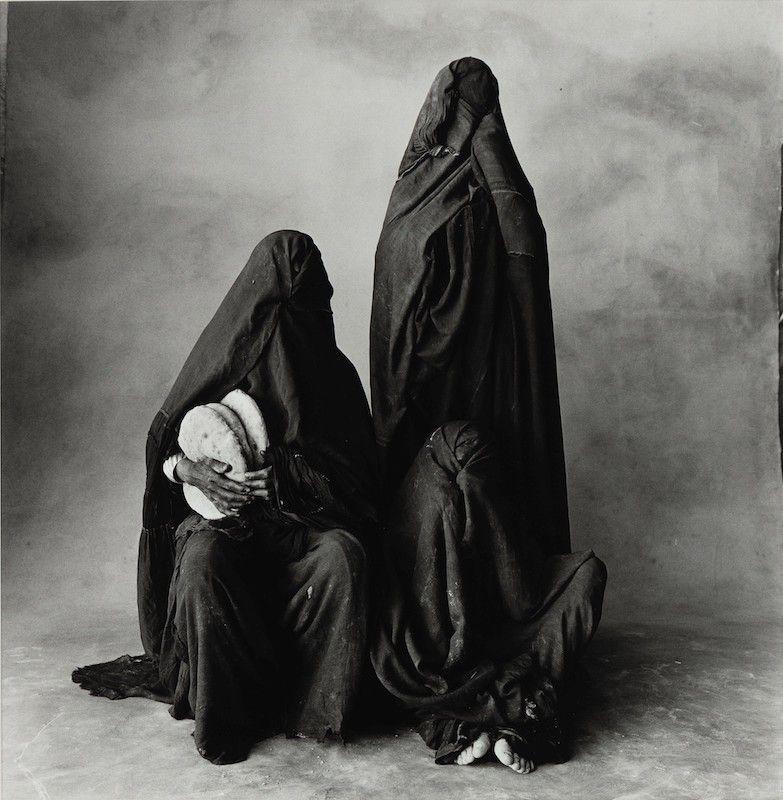
Irving Penn, Two Guedras, Morocco (1971) and Three Rissani Women with Bread, Morocco (1971)
In the 1950s Penn made a series of pictures in Paris, London and New York, for which he invited tradesmen, - butchers, fishmongers, fire brigades, mailmen and so on -, to the studio exactly as they would dress for the job, bringing their tools of work. The resulting photos are reminiscent of the photos August Sander took in the 1920s and now serve as a fascinating historical document. Someone should do a similar series today of system architects, full stack developers and engineers.
For years Irving Penn took photos for Issey Miyake, which bring out the graphic and sculptural quality of the designs.
Irving Penn is at the Grand Palais, Paris until 29 January 2018. The exhibition is accompanied by a catalogue, "Irving Penn: Centennial", which you can buy at your favourite bookstore, while stock lasts.
